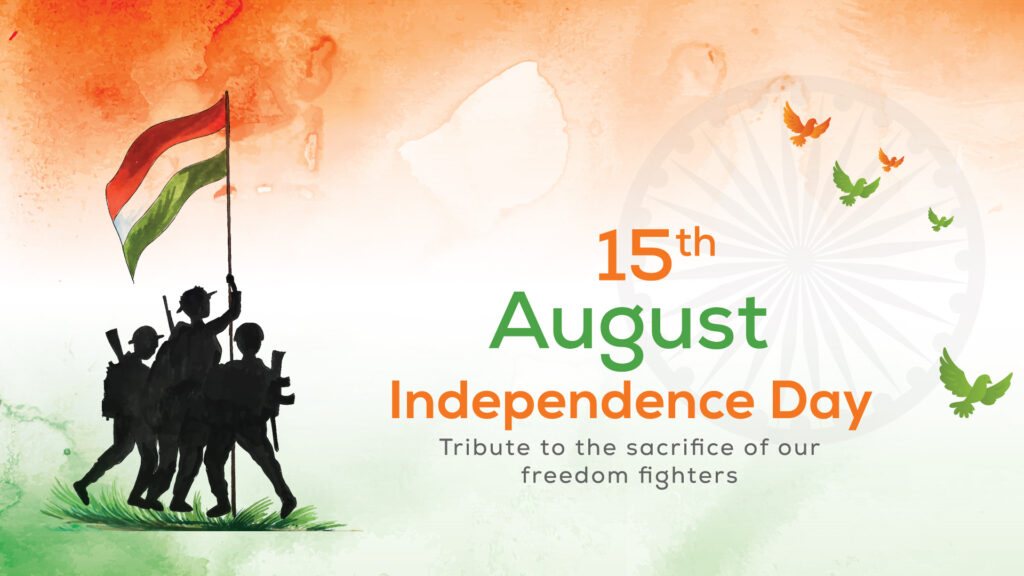India’s Mighty Warriors of Freedom: Icons Who Shaped Independence
The journey towards India’s independence from British colonial rule is a significant chapter in history, marked by the unwavering spirit and sacrifices of remarkable individuals. Many of these individuals devoted their lives to the cause of India’s freedom, and some became iconic figures who left a lasting impact on the nation’s road to liberation. These freedom fighters were born in different times and played various roles that greatly influenced the fate of the nation.
Let’s take a closer look at their extraordinary lives and the meaningful contributions they made as we celebrate Independence Day.

Bal Gangadhar Tilak (1856-1920):
Born on July 23, 1856, in Ratnagiri, Maharashtra, Bal Gangadhar Tilak was a prominent freedom fighter, social reformer, and nationalist leader. Often referred to as the “Lokmanya” (beloved of the people), Tilak ignited the spark of self-awareness and political consciousness among Indians through his writings and speeches. He believed in using cultural symbols and rituals to unite the masses and worked tirelessly to awaken the spirit of nationalism, advocating for “Swaraj” or self-rule. His famous slogan, “Swaraj is my birthright and I shall have it,” continues to inspire generations.
Mahatma Gandhi (1869-1948):
Born on October 2, 1869, in Porbandar, Gujarat, Mohandas Karamchand Gandhi, fondly known as Mahatma Gandhi, is perhaps the most globally recognized face of India’s struggle for independence. Gandhi’s philosophy of nonviolent resistance, or “Satyagraha,” united the masses and led to transformative movements such as the Salt March and Quit India Movement. His principles of truth, nonviolence, and civil disobedience became the guiding light for not only India’s fight for freedom but also for numerous other struggles around the world.
Vinayak Damodar Savarkar (1883-1966):
Born on May 28, 1883, Vinayak Damodar Savarkar was a multifaceted revolutionary, writer, poet, and politician. Hailing from a small village in Maharashtra, Savarkar’s revolutionary activities against the British government led to his imprisonment on the infamous Cellular Jail in the Andaman and Nicobar Islands. He coined the term “Hindutva,” emphasizing the cultural and nationalistic essence of Hinduism. Savarkar’s contribution to the fight for independence and his writings on Hindutva continue to influence Indian politics and society.
Subhas Chandra Bose (1897-1945):
Born on January 23, 1897, in Cuttack, Odisha, Subhas Chandra Bose, popularly known as Netaji, was a charismatic leader who believed in active resistance against British rule. Bose played a crucial role in organizing the Indian National Army (INA) and sought support from Axis powers during World War II to overthrow British rule. His famous slogan “Give me blood, and I shall give you freedom” reflected his unwavering determination. Bose’s mysterious disappearance and his contributions to India’s independence continue to intrigue historians and citizens alike.
Bhagat Singh (1907-1931):
Born on September 28, 1907, in Punjab, Bhagat Singh is remembered as a symbol of courage and sacrifice. He was an integral part of the Hindustan Socialist Republican Association, advocating for complete independence through radical means. Singh’s daring acts, including the throwing of non-lethal bombs in the Central Legislative Assembly and the assassination of a British police officer, brought attention to the plight of Indian freedom fighters. His legacy remains an inspiration for those willing to challenge tyranny for the sake of justice and liberty.
Born across different eras, India’s independence warriors embraced diverse ideologies, leaving profound imprints on the nation’s struggle for liberty. Bal Gangadhar Tilak,Mahatma Gandhi,Vinayak Damodar Savarkar, Bhagat Singh, and Subhas Chandra Bose stand as symbols of unwavering courage, sacrifice, and commitment to freedom. Their enduring legacies inspire unity, resilience, and justice. As India progresses, these figures remain a timeless source of inspiration, underscoring individuals’ power to shape a nation’s destiny.
On August 15, 1947, India gained independence, making Independence Day a reminder of sacrifices and a celebration of unity through flag hoisting, honoring freedom fighters, and fostering national pride.
Wishing you a joyful 76th Independence Day from the ClassTym Team.
Also Read – 10 Trending Career Opportunities in India
